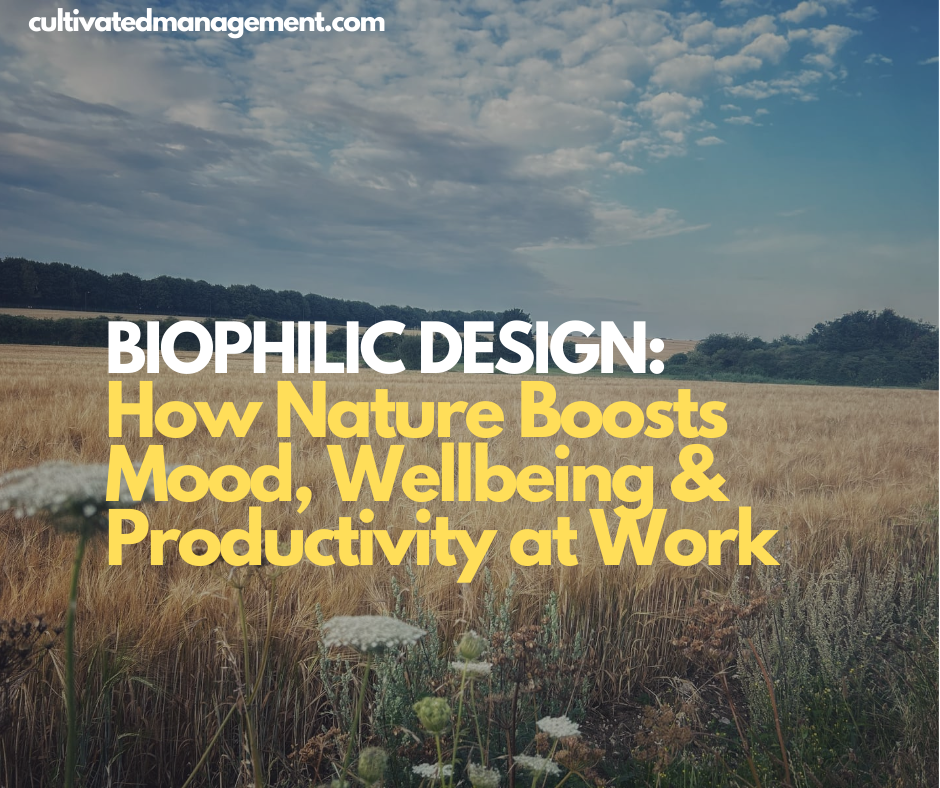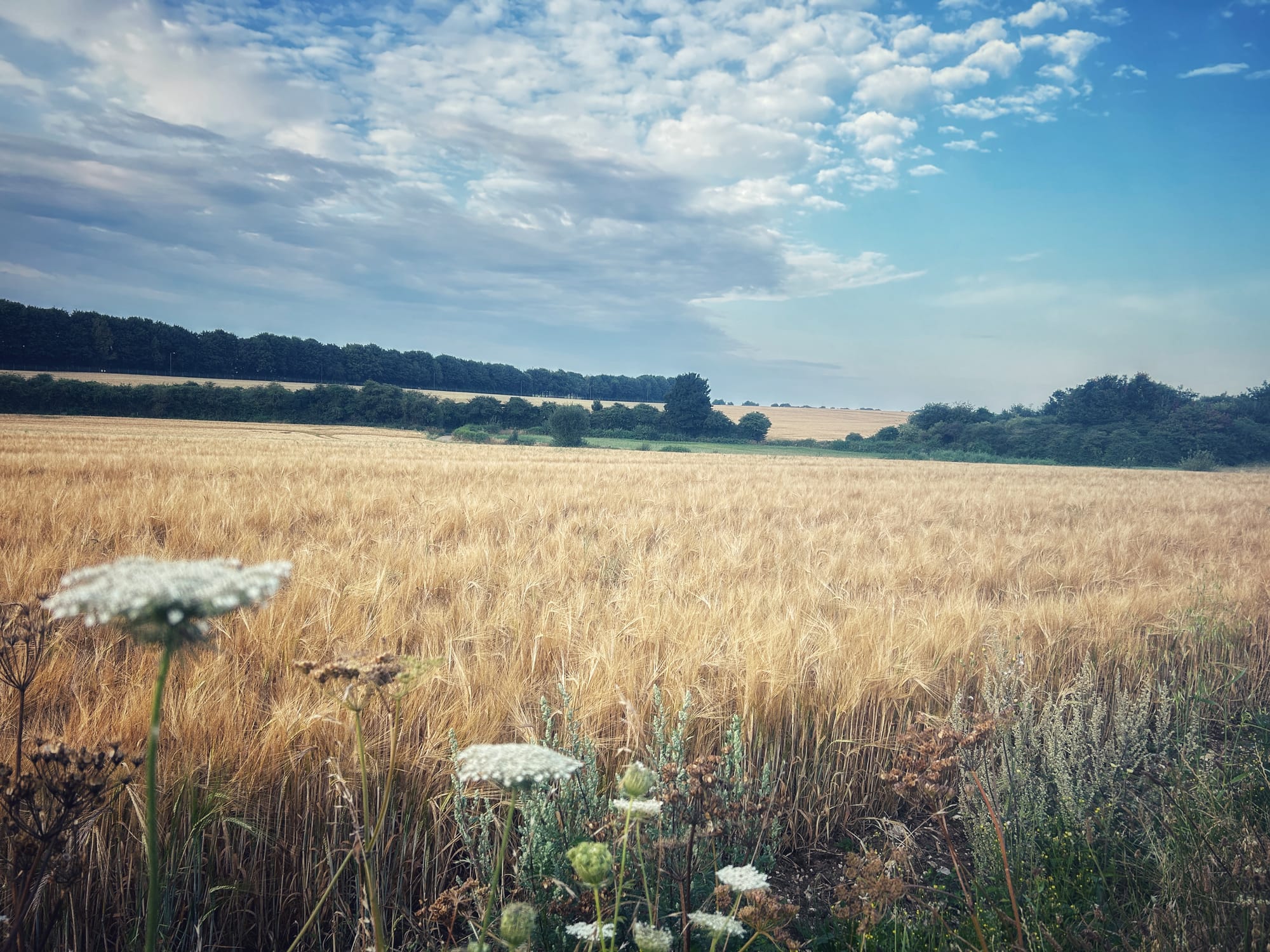
Biophilic Design: Bringing Nature into Our Workspaces
Biophilic design is more than just a trend—it’s an intentional approach to architecture, planning, and workplace design that connects people with the natural world. From building materials, plants, and sunlight to colors, shapes, and surrounding green spaces, biophilic design focuses on how nature affects the people inhabiting these environments.
It’s not limited to offices. Cities, co-working spaces, even home studios can benefit from thoughtfully incorporating natural elements. I’ve recently started exploring this subject in more depth—and it inspired this podcast episode.
For more insights, check out the full podcast episode, photo gallery, and bibliography below:
Why Nature Matters at Work
Humans are inherently drawn to nature. Research consistently shows that environments rich in natural elements improve mood, focus, and wellbeing. Judith Heerwagen, a leading researcher in biophilic design, has extensively studied the connection between built environments and human wellness. Her findings highlight how natural surroundings positively affect mental, physical, and even spiritual health.
Some simple examples include:
- Forest bathing (Shinrin-yoku, Japan): Spending time in forests regularly can reduce stress and increase a sense of calm and connection.
- Office plants: Even one pot plant can influence your mood and concentration.
- Sunlight exposure: Access to natural light regulates sleep, mood, and energy levels, improving productivity.
Observing “Weak Signals” of Biophilic Trends
Small changes in behavior can signal larger shifts. During remote work, I noticed colleagues gradually adding plants and natural elements to their video call backgrounds. It started with one pot plant, then two, then a small indoor garden. Eventually, these subtle changes appeared in office spaces too—bamboo laptop risers, natural wood furniture, and flowers.
These are “weak signals,” glimpses of cultural trends before they become mainstream. Paying attention to them can help organizations and individuals adopt practices that enhance wellbeing and productivity.
Practical Ways to Integrate Biophilic Design
You don’t need a complete office overhaul to benefit from biophilic design. Here are strategies that work across home offices, co-working spaces, and corporate workplaces:
- Maximize Sunlight:
Position your workspace near windows, doors, or skylights. Sunlight supports mental clarity and physical health. If natural light is limited, consider SAD lamps or daylight-simulating lights to mimic the benefits of the sun. - Add Plants:
Indoor plants improve mood, air quality, and focus. Hardy, low-maintenance plants like succulents or snake plants work well for busy professionals. Even a small collection of pot plants can create a more natural and inviting workspace. - Natural Materials:
Wood, stone, bamboo, and other natural materials help bring a tactile sense of nature into the workspace. A wooden desk, bamboo laptop stand, or stone paperweight can provide subtle grounding benefits. - Water Features:
Pools, fountains, or tabletop water elements can create a calming auditory and visual environment, mimicking rivers, streams, or lakes. The gentle movement of water can enhance focus and reduce stress. - Colors & Shapes Inspired by Nature:
Colors affect mood and productivity. Vibrant shades can energize, while softer tones can calm. Consider adding natural color palettes—greens, browns, blues—or shapes inspired by nature such as circles, curves, or organic patterns. - Acoustics:
Open-plan offices can be noisy and distracting. Soft furnishings, curtains, and strategically placed bookshelves absorb sound and create quiet zones for deep work. Even small cubicles or partitions help create spaces for focused concentration. - Go Outside Whenever Possible:
If your workspace can’t be fully natural, take short breaks outdoors. Walks in the park, sitting in a garden, or even enjoying a few minutes near a window can reconnect you to nature.
Biophilic Design vs. Sustainability
It’s important to distinguish biophilic design from sustainability initiatives. While green roofs, solar panels, or energy-efficient systems are excellent for the planet, biophilic design focuses on visible, interactive nature that benefits people directly. Ideally, you can combine both approaches—like a rooftop garden that’s both sustainable and a pleasant place for employees to relax.
My Personal Take
Recording this podcast outdoors made me appreciate the power of nature firsthand. Standing in a field, listening to the wind, watching the barley sway, I was reminded how easy it is to feel grounded and recharged when immersed in natural surroundings.
Even small touches—like adding a wooden desk accessory, a plant on your windowsill, or opening your blinds to catch the sunlight—can make a real difference. For organizations, investing in biophilic design is not just about aesthetics; it’s about cultivating happier, healthier, and more productive people.





A collection of photos from my walk where I recorded this episode
Final Thoughts
Whether at home, in a co-working space, or a corporate office, biophilic design offers a range of simple, actionable strategies:
- Bring in plants and greenery.
- Let in sunlight and maximize natural light exposure.
- Use natural materials like wood and stone.
- Add water features or nature-inspired art.
- Consider acoustics, color, and shapes in your workspace.
Even small steps can improve wellbeing, focus, and productivity. Take a look around your workspace today: do you need more daylight, plants, or natural textures? Or do you just need a short walk outside?
Bibliography
Biophilic design — Future of Work Hub [WWW Document], 2021. . futureofworkhub. URL https://www.futureofworkhub.info/explainers/2021/4/7/biophilic-design-and-the-workplace (accessed 7.18.24).
Biophilic design [WWW Document], n.d. URL https://www.designingbuildings.co.uk/wiki/Biophilic_design (accessed 7.18.24).
Bolten, B., Barbiero, G., 2020. Biophilic Design: How to enhance physical and psychological health and wellbeing in our built environments. Visions for Sustainability 11–16. https://doi.org/10.13135/2384-8677/3829
Dalay, L., Aytaç, G., 2022. Biophilic Design: Integrating Nature Into the Urban Environment, in: Emerging Approaches in Design and New Connections With Nature. IGI Global, pp. 1–19. https://doi.org/10.4018/978-1-7998-6725-8.ch001
Gillis, K., Gatersleben, B., 2015. A Review of Psychological Literature on the Health and Wellbeing Benefits of Biophilic Design. Buildings 5, 948–963. https://doi.org/10.3390/buildings5030948
Johanson, M., n.d. How ‘biophilic’ design can create a better workspace [WWW Document]. URL https://www.bbc.com/worklife/article/20200929-how-biophilic-design-can-create-a-better-workspace (accessed 7.18.24).
Mollazadeh, M., Zhu, Y., 2021. Application of Virtual Environments for Biophilic Design: A Critical Review. Buildings 11, 148. https://doi.org/10.3390/buildings11040148
Wijesooriya, N., Brambilla, A., 2021. Bridging biophilic design and environmentally sustainable design: A critical review. Journal of Cleaner Production 283, 124591. https://doi.org/10.1016/j.jclepro.2020.124591
Yildirim, M., Gocer, O., Globa, A., Brambilla, A., 2023. Investigating restorative effects of biophilic design in workplaces: a systematic review. Intelligent Buildings International 15, 205–247. https://doi.org/10.1080/17508975.2024.2306273
